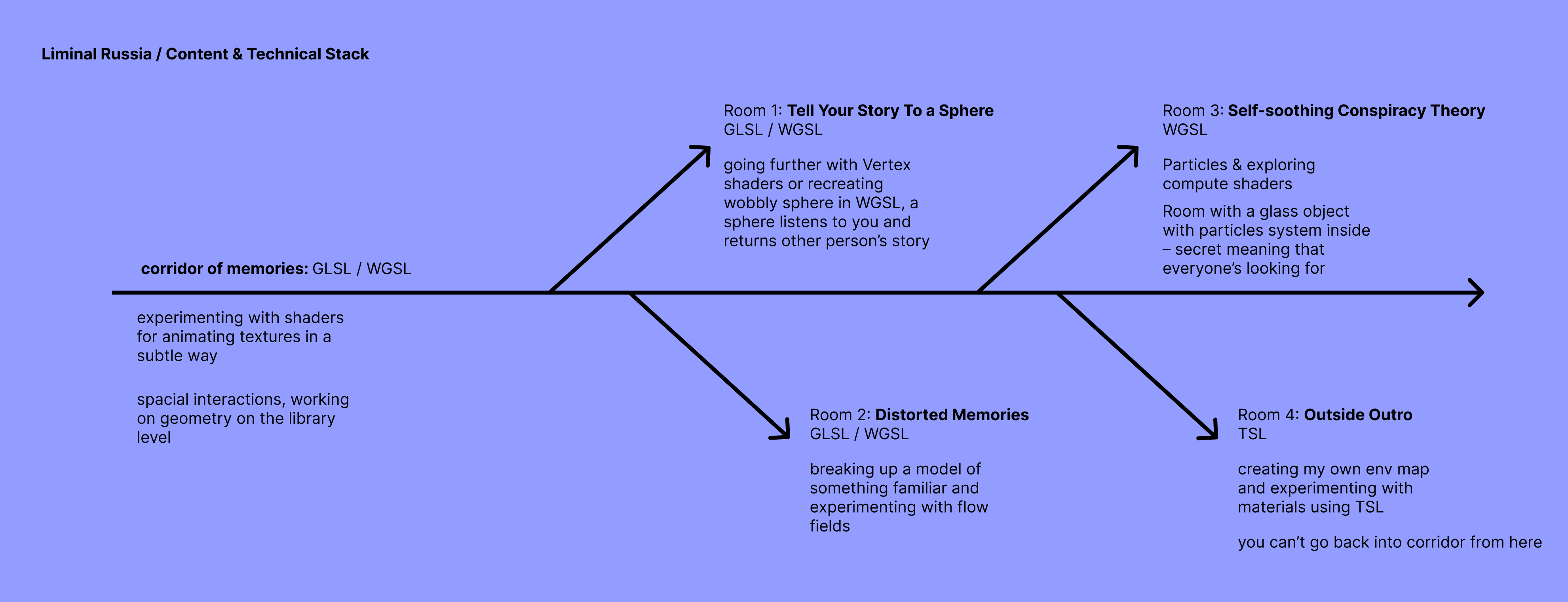
Planning
WebGPU Fundamentals
I am finishing going through textures lessons, including using pictures and videos as textures. I don’t think I am going to use loading images on this low level, as I am limited in time, I need to be able to think of the best usage for shaders, something you would not be able to do on Three js / React Three fiber level. Per my planning I need to start working on the set up and the scene tomorrow, so there are some things I will go through / revisit while working on my experience.
During this passion project I will not look into creating 3d Math on shading languages level, as Three js can do nearly everything much easier. So my plan for WebGPU fundamentals is:
- Finish textures lessons (today)
- Deeper than fundamental Compute shader lessons
- Check bind group layouts, I have a feeling I might need them
- Particles lessons – WebGPU Points
- Revsisting How WebGPU works and difference between WebGL and WebGPU
While doing so, there are things I know I will revisit anyway, such as Memory layout and Transparency and blending
Planning usage
Every day that I read another article from WebGPU fundamentals, I kind of scroll through the whole website one more time to see what became clearer and if new knowledge filled some spots that were blank before=) It’s time to make decisions now! Based on what I learnt about WGSL and TSL, I mapped out my features, put short explanation about each context and specified which shading language I am thinking to use for that:

The reason why I have GLSL / WGSL 3 times is because I am not sure what will be the better soultion at the moment and if I will be able to work with WGSL at the same level as GLSL. I am at least sure to highlight compute shaders of WGSL for my room no. 3, and to make use of TSL as more textures / materials for my room no. 4. As this whole project is a research proccess, these choices might change based on what I am going to learn on my way.
Then I also added visual references for each location:
Intro and Corridor
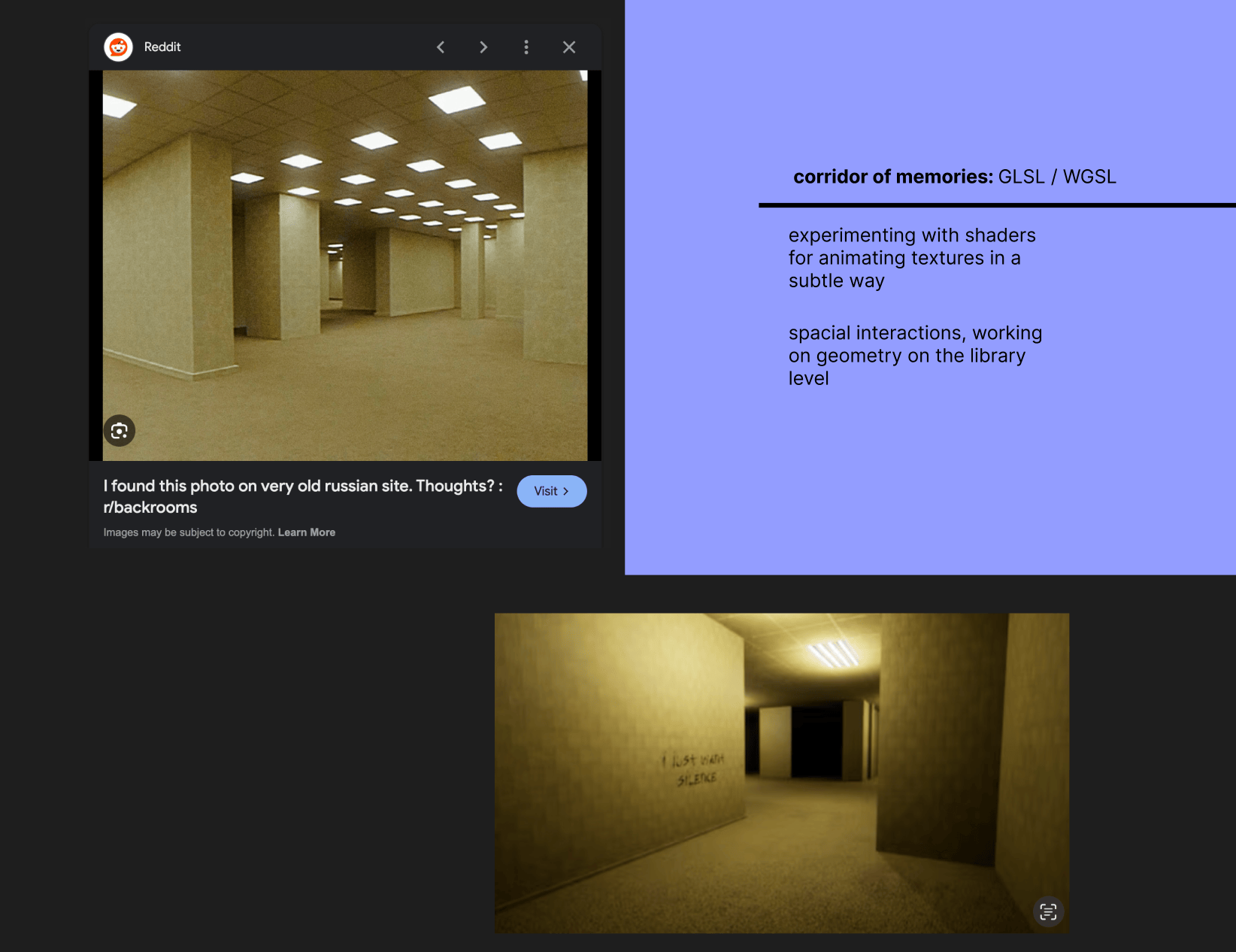
Listening sphere
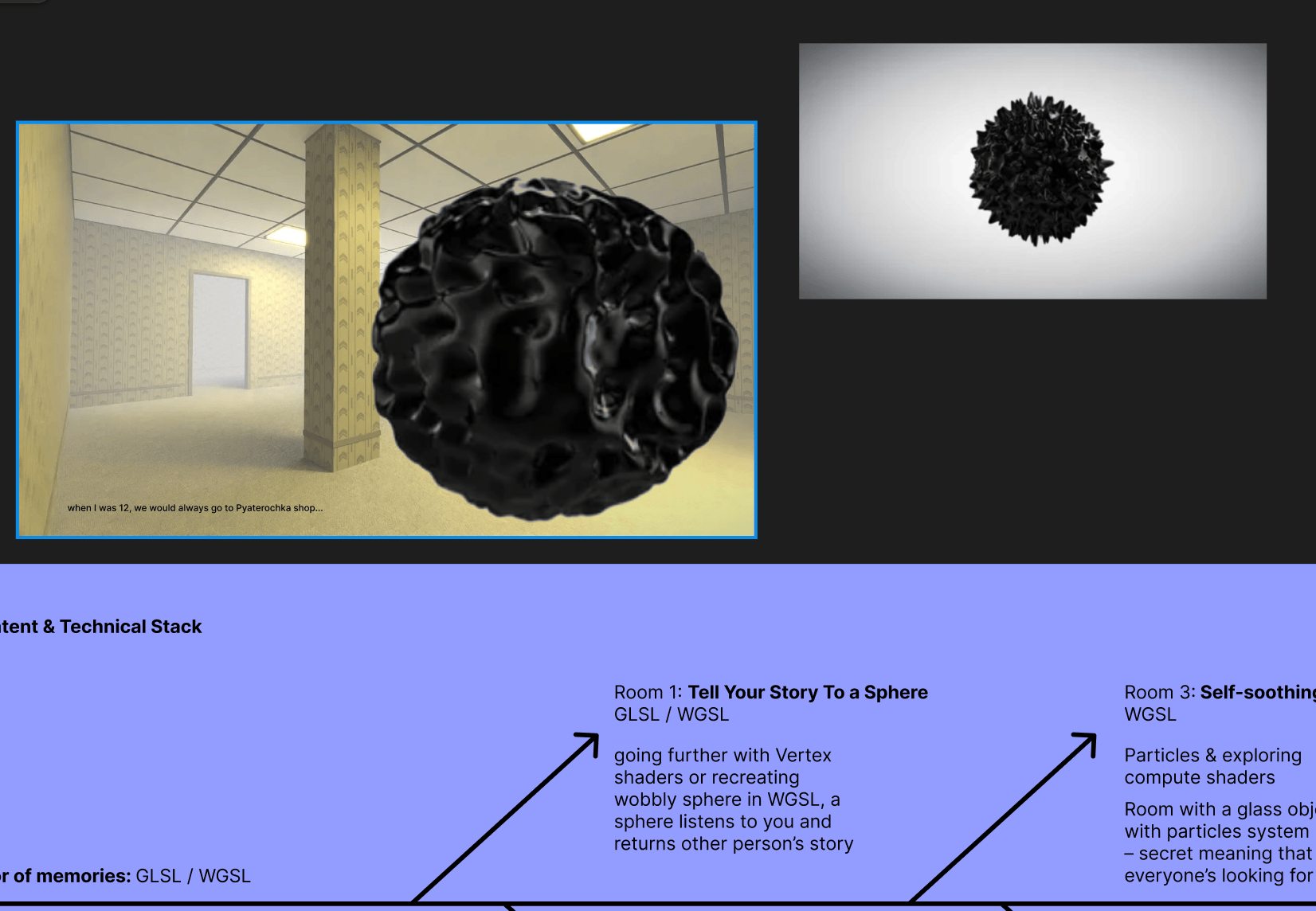
Room with a conspiracy theory
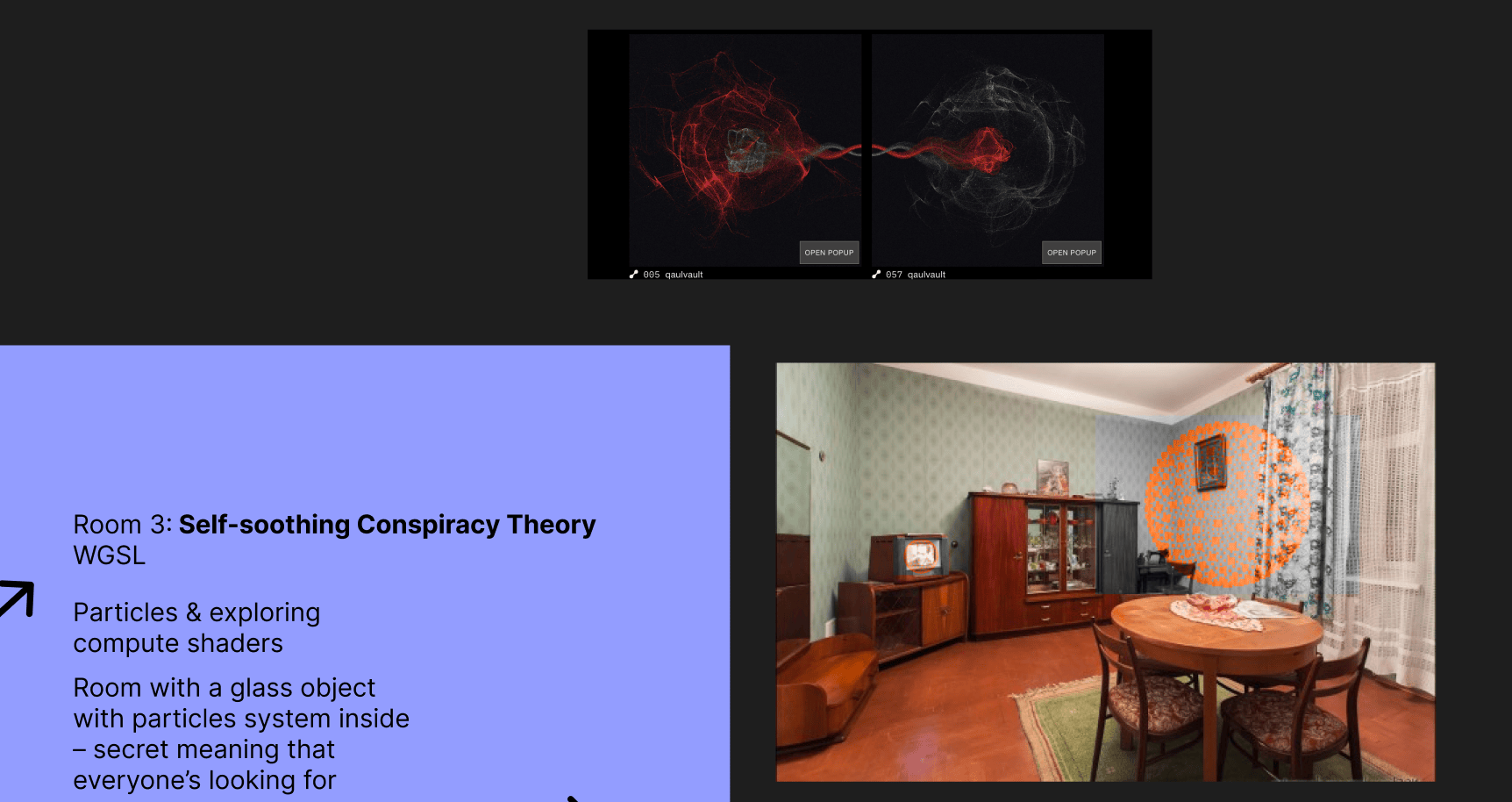
Distorted memories and outside outro
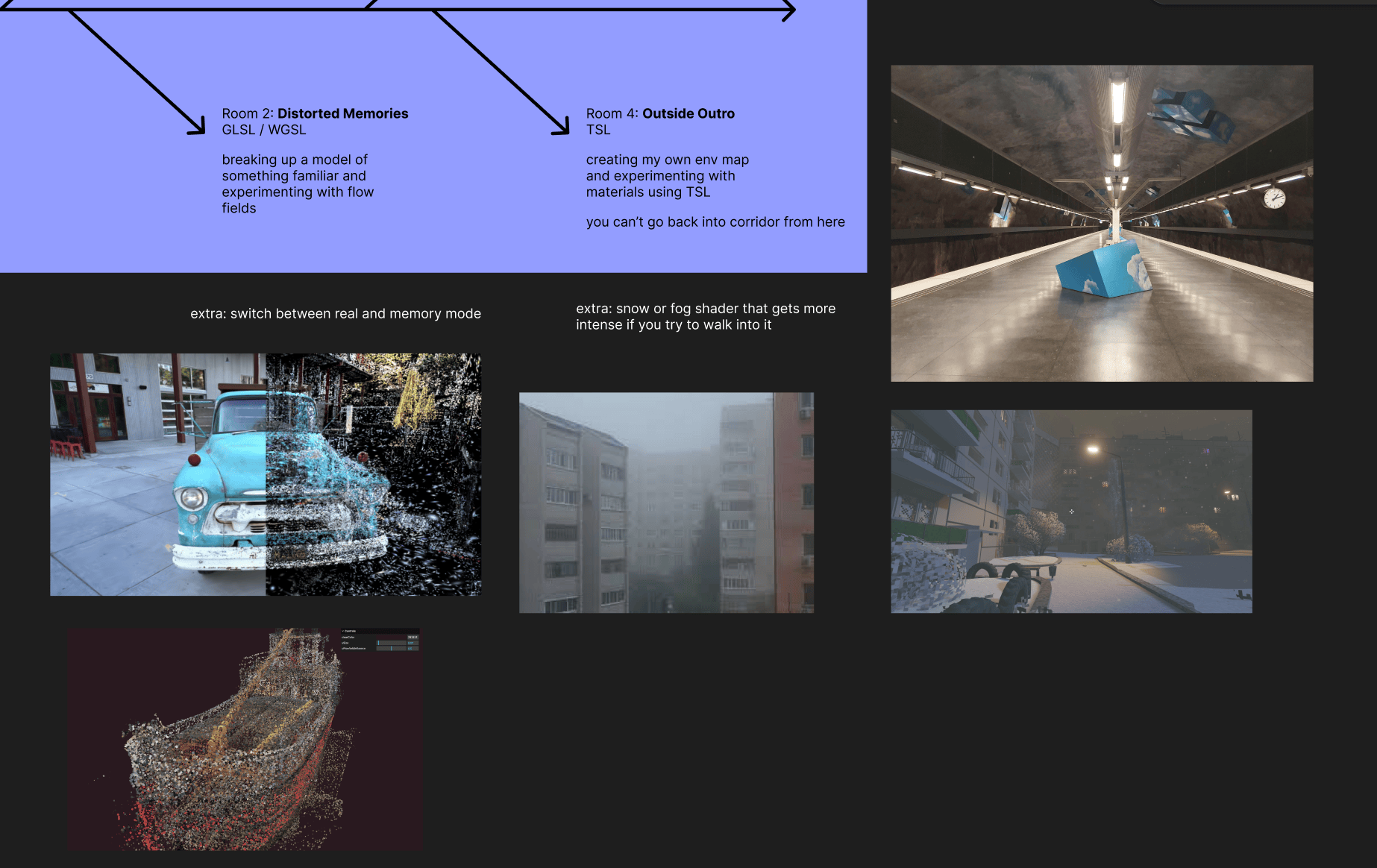
Back to today’s programme
I am finishing with textures, even though I don’t think ia m goimng to load videos in WGSL, I went over the article, and the CubeMap article actually helped me to understand how normals abd environment map works. I also have better understanding how lighting works together with normals, this is quite helpful picture:

Following the lessons, I have created several demos in my demo folder in Liminal Russia repo. Now my brain is boiling with theory, and I want to switch to practice with some faster beautiful results:)